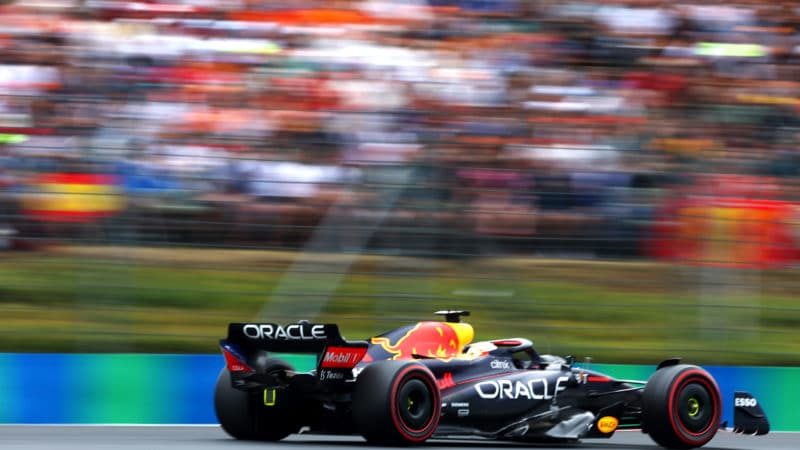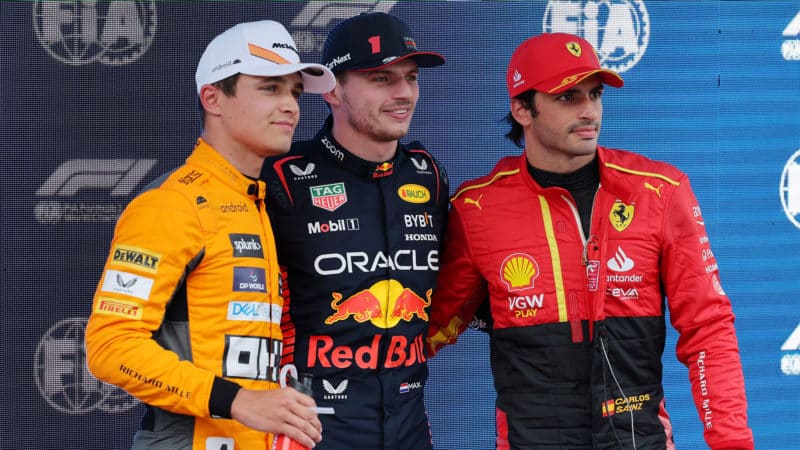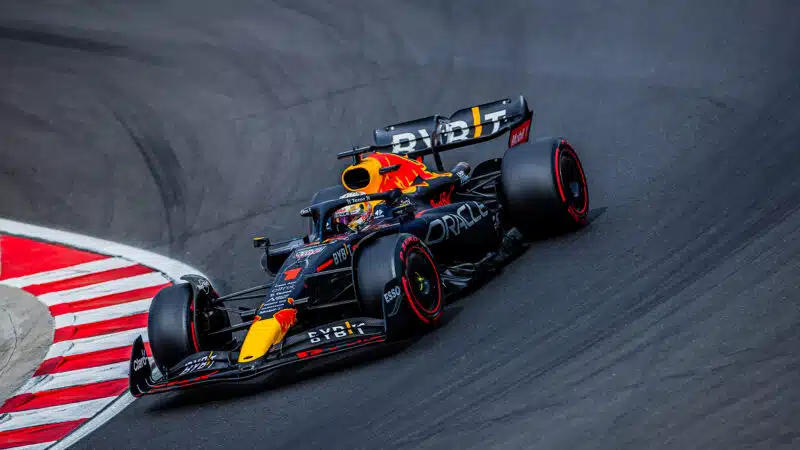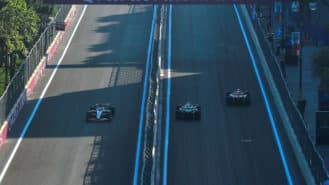On paper, this should mean that drivers are provided with a new challenge in each session – forcing them to be fast on every compound – with lap times becoming quicker as qualifying progresses. The switch between compounds may also result in competitors using different racing lines in order to find the ultimate amount of grip and should showcase the grid’s best all-around drivers.
Over the course of the race weekend, each driver will have access to three sets of hard compound tyres, four sets of medium and four sets of soft tyres – bringing the total tyre allocation down from 13 to 11.
One set of tyres has to be returned following FP1, and another after FP2, with two more handed in following FP3.
Rules require drivers to retain a set of hards and mediums for race day, but competitors should technically end up with two sets of each compound, with increased options for race strategy.
However, these restrictions will only apply to a dry qualifying session. If it rains in Italy during the one hour session, teams will have free choice over the intermediate or full wet tyre.
How will the format affect drivers’ qualifying runs?

Verstappen has already had eight pole positions in 2023 – will a new qualifying format prevent a ninth?
Bryan Lennon/F1 via Getty Images
The massive changes in tyre compound between each session of qualifying can require new strategy approaches from teams in order to extract the best lap times.
In Q1, teams can opt to fuel their cars for the entire 18-minute session, giving the drivers plenty of time to bring the required hard tyre up to working temperature and capture the best lap times. Failure to do so can result in a shock exit or two, as the track evolves throughout the first part of qualifying. George Russell was knocked out in Q1 in Hungary, but this was more down to poor track positioning rather than tyre strategy.
In Q2, teams will be expected two adopt a similar philosophy, but are more likely use two sets of the medium tyre to secure a place in the shootout for pole position.
Finally in Q3, drivers should set the fastest times of day on the soft tyre compound but now with much less time to practice with the increased levels of grip.
Where will the format be used?
The format was set to debut at the Emilia Romagna Grand Prix in May, but intense rainfall and flooding forced the race to be cancelled. After its introduction in Hungary, its second trial is scheduled to take place at the Italian GP – if it stays dry.
Why is F1 trialling another new qualifying format?
With the current dominance of Max Verstappen causing interest in F1 to waver, race organisers have been beginning to trial different formats in order to reinvigorate race days.
F1 CEO Stefano Domenicali has made clear that handicapping Red Bull’s RB19 is not the path back to competitive racing – stating he “cannot intervene” – and so format changes may be the best way to ensure other teams have a chance at scoring pole positions and front row starts.
In the end Hungarian GP’s qualifying was exciting, but mainly due to Lewis Hamilton’s brilliant last-gasp pole time. It could also be beneficial from a conservation and economical point of view – the tyre allocation for each car this weekend is reduced from 13 sets to 11. If F1 were to adopt to new changes over the course of a full 23-race season, it could save as many as 3,680 tyres from use.
What do teams and drivers think about the changes?

The ‘Alternative Tyre allocation’ format has been met with mixed reactions
Lluis Gene/AFP via Getty Images
Reactions to the trialled format have been mixed, with several drivers venting after it affected their Friday practice runs in Hungary.
“With this new format, you are just super limited with the tyre sets that you can use, and I didn’t want to use them today to at least have a bit more of a better preparation tomorrow,” Verstappen said.
“But it’s a bit of a shame – there are so many people around and you basically don’t really run a lot.
“We have to see what we can do to improve that, because we are literally saving tyres, which I think is not the correct thing.”



